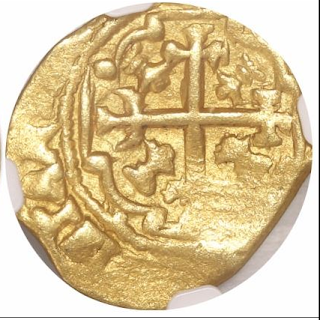Written by the TreasureGuide for the exclusive use of treasurebeachesreport.blogspot.com.
Another example would be the Aztec calendar wheel below.
 |
| Example of Mandala. https://redice.tv/news/on-the-nature-of-four-jung-s-quarternity-mandalas-the-stone-and-the-self |
You probably have heard the word "mandala." It seems every major culture has used mandalas. Sometimes they are referred to as "squared circles." Some of them seem to me to be more like quartered circles - circles divided into four parts. Above is one of an infinite variety. This particular example can be found all over the internet.
Just the other day it occurred to me that the design displayed on many cobs is that of a mandala. Below is an example. Not the absolute best example, but it will serve.
 |
| 1711 Mexico One-Escudo From The Curren Sedwick Coins Auction. |
Another example would be the Aztec calendar wheel below.
Is this all just coincidence or making too much of nothing? Or is it something more?
I can certainly see how an Aztec or Incan might see something familiar in the design of a cob, and how the cob might become an object of meditation for the mystically inclined from either the Old or New World.
---
Conquest of Peru by Francisco Pizarro brought the destruction of the fine gold treasures of the Chimu and Inca peoples. The ransom for the Inca emperor Atahualpa alone yielded around 150,000 ounces. Total looting of wonderful ornaments in South America may have provided over 250,000 ounces, reflected in the jump in Spanish imports 1531-40 (see box). Most ornaments were melted down for coin.
The above table and paragraph are from the following linked site where you can learn more about gold supplies.http://info.goldavenue.com/info_site/in_arts/in_mill/16thcentury.htm
There was an edict in the 16th century that the gold ornaments sent to Spain would be melted and made into coin. The Seville mint produced that coinage made from New World sources. Of course then some of that coinage would find its way back to the New World.
---'
In this excerpt from La Relación, published in 1542, the Spaniard Álvar Núñez Cabeza de Vaca relates how he and several others escaped their enslavement by an American Indian tribe on the upper Gulf Coast of present-day United States. As they come upon another town of Indians, the Spaniards are taken as faith healers and welcomed. Cabeza de Vaca and his compatriots—Andrés Dorantes de Carranza, Alonso del Castillo Maldonado, and an enslaved Moroccan Berber named Esteban—were the only survivors of an expedition launched by Pánfilo de Narváez in 1528. They journeyed from present-day Florida and through the American Southeast, finally arriving in Mexico City in 1536.
Below is the link to the excerpt describing some of the adventures of Cabeza de Vaca in the New World. He was shipwrecked, became a slave and then a healer to the natives, and was later appointed to office in South America. Really good reading.
http://www.encyclopediavirginia.org/The_Healers_an_excerpt_from_La_Relacion_by_Alvar_Nunez_Cabeza_de_Vaca_1542
If you want to read more about this fellow, look up La Relacion.
---
I started a few new object cleaning projects and will have photos of those for your soon.
Happy hunting,
TreasureGuide@comcast.net

